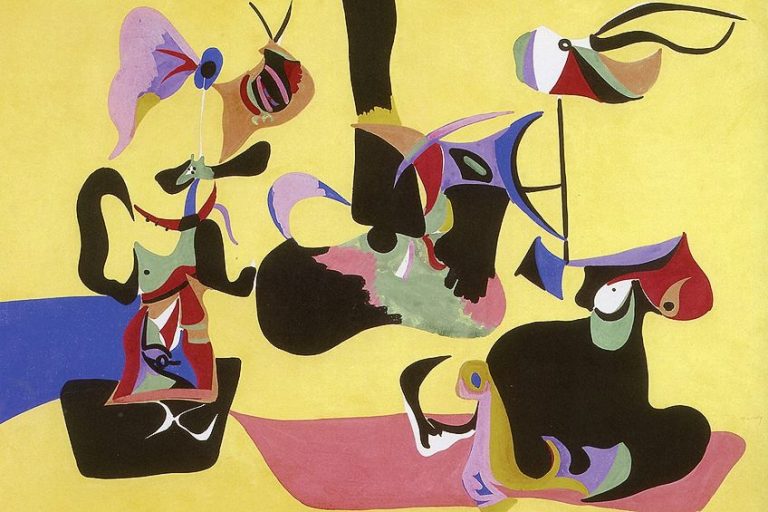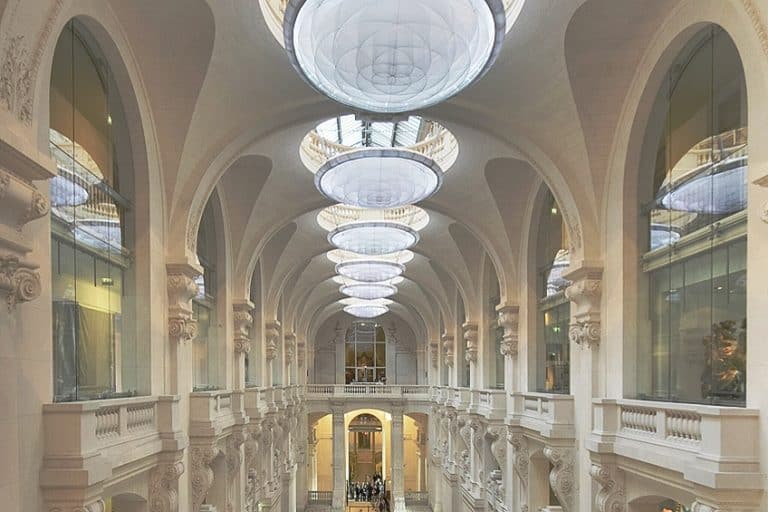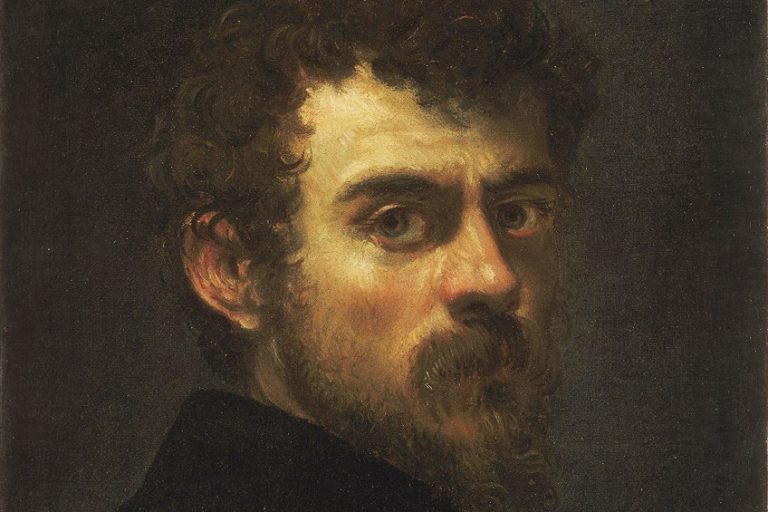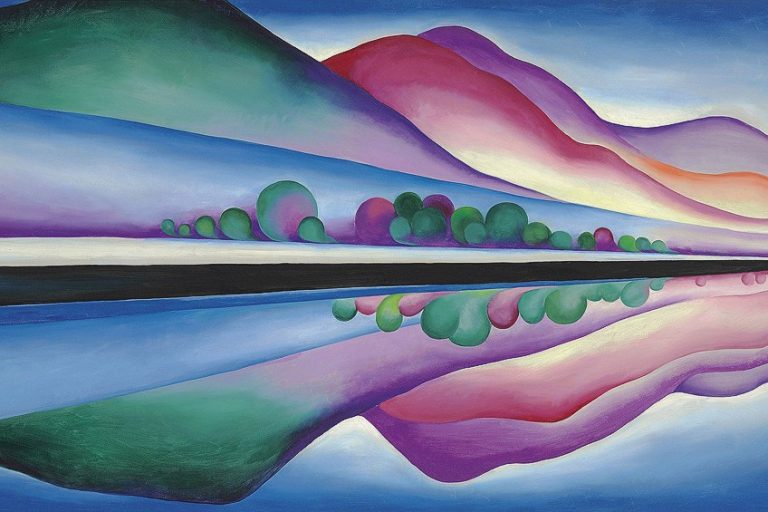Kaws – An In-Depth Look at His Famous Artworks
Kaws, the enigmatic American graffiti artist, has captivated audiences worldwide with his distinctive style and thought-provoking artworks. With a unique blend of pop culture references, street art aesthetics, and fine art sensibilities, Kaws has carved out a distinct niche in the contemporary art scene. From his early days as a graffiti artist to his meteoric rise to international acclaim, Kaws has continually pushed boundaries and challenged traditional notions of art. Through his captivating paintings, sculptures, and multimedia creations, this article delves into the life and work of the acclaimed artist, shedding light on the evolution of Kaws as an influential figure in the art world.
Kaws: Artist Abstract
| Date of birth | 4 November 1974 |
| Place of birth | Jersey City, New Jersey, United States |
| Nationality | American |
| Style | Pop art, street art, and graffiti |
| Period | Modern art |
In the realm of contemporary art, few names have captured the imagination of both art enthusiasts and pop culture aficionados as much as Kaws. With his distinctive blend of cartoon imagery, street art aesthetics, and a critical examination of consumerism, Kaws has become a groundbreaking force in the art world. This section of the article delves into the life and work of Kaws, from his childhood and training to his major career achievements and lasting impact on art history.
Childhood and Early Influences
Born as Brian Donnelly in 1974 in Jersey City, New Jersey, Kaws grew up with a passion for cartoons and popular culture. He developed an early fascination with iconic characters like Mickey Mouse, Snoopy, and the Smurfs, which would later influence his artistic vision.
The vibrancy and energy of street art that surrounded him in New York City also played a significant role in shaping his creative sensibilities.
Training and Early Kaws Artworks
After completing his studies at the School of Visual Arts in New York, Kaws began his career as a traditional graffiti artist, leaving his mark on the streets with his signature “X” symbol. However, he soon transitioned from illegal tagging to creating his own art toys and limited edition collectibles. This marked a pivotal moment in Kaws’ artistic journey, as it allowed him to experiment with sculpture and reinterpret beloved cartoon characters in his unique style.
Major Career Achievements
Throughout his career, Kaws has achieved remarkable milestones and garnered widespread acclaim for his distinctive style and groundbreaking contributions. Here we delve into the major career achievements of Kaws, shedding light on the transformative moments that have solidified his position as an influential figure in the art world.
Let us take a look at some of his best series, exhibitions, and collaborations.
Companion Series
Kaws’ iconic Companion character emerged in the late 1990s and quickly gained international recognition. The Companion, with its XX-eyed skull face and slumped posture, became Kaws’ signature creation and an emblem of his artistic philosophy. The character’s presence in various forms, including sculptures, paintings, and large-scale installations, has captivated audiences worldwide.
Museum Exhibitions
Kaws’ works have been showcased in prominent museums and galleries globally. Notable exhibitions include KAWS: Along the Way (2015) at the Brooklyn Museum, Where the End Starts (2017) at the Modern Art Museum of Fort Worth, and KAWS: Where the End Starts (2017) at the Yuz Museum in Shanghai.
These exhibitions allowed audiences to experience the immersive and thought-provoking world created by Kaws.
Collaboration With Fashion and Popular Brands
Kaws’ ability to bridge the gap between art and commerce has led to high-profile collaborations with renowned fashion and lifestyle brands such as Dior, Nike, and Uniqlo. His distinctive style and characters have graced everything from clothing lines to collectible sneakers, making Kaws’ art accessible to a broader audience.
The Evolution of Graffiti Art in the United States: From Vandalism to Cultural Movement
Graffiti art has a rich and complex history in the United States, evolving from its roots as an underground form of expression to becoming a recognized and influential cultural movement. To understand Kaws’ artworks, we need to delve into the art form that his style originated out of. This section of the article traces the journey of graffiti art, exploring its motivations, political background, evolution over the years, and influential artists.
Ultimately, we explore its connection to contemporary artists like Kaws.
The Emergence of Graffiti Art and Its Motivations
Graffiti art began to gain popularity in the late 1960s and early 1970s, primarily in urban areas. Motivated by a desire to leave their mark on the streets, artists started using spray paint, markers, and other materials to create colorful and bold visual statements. Many graffiti artists sought to reclaim public spaces, which had been neglected or marginalized, and use them as a canvas to express their identities, experiences, and frustrations.
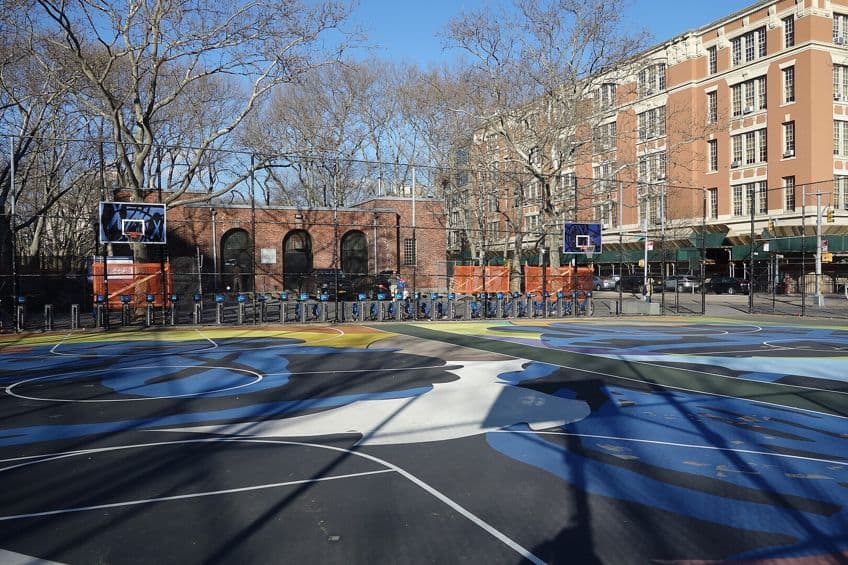
The Political Background of Graffiti Art
Graffiti art emerged during a time of social and political unrest in the United States. It served as a form of protest against the mainstream art establishment, oppressive systems, and inequality. Graffiti artists found inspiration in the civil rights movement, anti-war protests, and the rise of hip-hop culture, which provided a platform for marginalized voices.
Through their art, they challenged authority, questioned societal norms, and sought to disrupt the status quo.
Evolution of Graffiti Art
Graffiti art has undergone a remarkable evolution, transforming from an underground form of expression to a recognized and influential cultural movement. Beginning with its origins in the streets of urban areas, graffiti art has evolved into a diverse and dynamic medium that challenges artistic conventions, pushes boundaries, and sparks conversations.

Influential Artists in Graffiti Art
In the vibrant world of graffiti art, there are artists whose creativity and innovation have left an indelible mark on the urban landscape and the art world at large. These influential artists have shaped and redefined the boundaries of graffiti art, pushing its expressive potential and inspiring generations to follow.
Their contributions have not only transformed the way we perceive and appreciate street art but have also influenced contemporary art and culture on a global scale.
Jean-Michel Basquiat
Although primarily known as a painter, Basquiat began his artistic career as a graffiti artist under the moniker SAMO. His fusion of graffiti art, street culture, and fine art brought attention to the creative potential of the medium and helped break down barriers between art forms.

Keith Haring
Haring’s iconic and instantly recognizable style, characterized by simplified figures and bold lines, became a symbol of the 1980s street art movement.
His public murals and subway drawings brought art to the masses, blurring the line between high art and street art.
Kaws and the Legacy of Graffiti Art
Kaws, influenced by the rebellious spirit of graffiti art, emerged as a prominent artist who seamlessly blends street art aesthetics with pop culture references. While his work has evolved beyond traditional graffiti, Kaws’ background in tagging and street art is evident in his use of bold lines, vibrant colors, and iconic characters.
Kaws’ journey from the streets to the art world parallels the evolution of graffiti art itself. His ability to transcend boundaries, collaborate with fashion and popular brands, and capture the attention of diverse audiences demonstrates the enduring impact of graffiti art on contemporary culture.
Kaws Paintings
From his famous characters with their X-eyed skulls to his playful reimagining of beloved cartoons, Kaws’ paintings are a visual feast that transcends traditional boundaries. In this section of the article, we delve into the mesmerizing world of Kaws’ paintings, exploring his unique style, thematic motifs, and the profound impact his work has had on contemporary art.
Join us as we unravel the artistry and imagination behind Kaws’ captivating paintings that continue to inspire and challenge the conventions of the art world.
Unveiling the Formal Characteristics of Kaws’ Paintings: A Fusion of Technique and Iconic Imagery
Kaws has carved a distinct niche in the contemporary art scene. Beyond the thematic depth of his work, Kaws’ paintings possess a set of formal characteristics that contribute to their unmistakable style and recognizability.
Bold Lines and Precise Composition
One of the defining features of Kaws’ paintings is his expert use of bold lines. With confident brushstrokes, he outlines his characters and forms, creating a striking visual impact. The lines are clean, precise, and dynamic, providing a sense of movement and energy within the composition.
Kaws’ meticulous attention to composition further enhances the visual appeal of his paintings, as he strategically arranges elements to create balanced and visually engaging artworks.
Vibrant Color Palette
Kaws employs a vibrant and captivating color palette that further distinguishes his paintings. He often utilizes bold and saturated hues, injecting life and vitality into his characters and backgrounds. The deliberate choice of colors, often contrasting or complementary, heightens the visual impact and adds a sense of playfulness to his artwork. Kaws’ skillful handling of color creates a visually stimulating experience that draws viewers into his imaginative world.
Iconic Characters and Subversion of Pop Culture
Central to Kaws’ artistic language are his iconic characters, which have become synonymous with his work. The most recognizable among them is the Companion character, featuring a skull-like face with X-marked eyes. Kaws ingeniously appropriates and subverts well-known cartoons and pop culture figures, imbuing them with his unique style and often presenting them in unexpected or thought-provoking contexts.
By merging familiar characters with his distinct visual language, Kaws challenges the conventional notions of commercialized imagery and creates a sense of both nostalgia and subversion.
Texture and Layering
Kaws employs various techniques to add texture and depth to his paintings. Through the use of multiple layers of paint and skillful blending, he creates a rich tactile quality that enhances the visual experience. This textured approach adds complexity and dimension to his characters, giving them a sense of depth and presence. The layering of paint also contributes to the overall visual narrative, allowing different elements to interact and invite viewers to explore the intricate details within the artwork.
Evoking Emotion and Ambiguity
Beyond the technical aspects, Kaws’ paintings evoke a range of emotions and often carry a sense of ambiguity. The juxtaposition of familiar imagery with unexpected alterations challenges viewers to question their preconceived notions.
This blend of nostalgia, humor, and a touch of melancholy creates a captivating emotional resonance, inviting contemplation and personal interpretation.
Exploring the Visual and Conceptual Depths of Kaws’ Untitled (2015)
| Title | Untitled |
| Date | 2015 |
| Medium | Acrylic on canvas |
| Dimensions (cm) | 244 × 244 |
| Location | N/A |
Kaws’ Untitled (2015) stands as an example of his renowned and influential paintings, encapsulating the artist’s distinct style and thought-provoking concepts. This visual and conceptual analysis dives into the layers of meaning and visual elements present in this iconic artwork.
We shed light on the profound impact it has had on the art world and its viewers.
Visual Analysis
The painting Untitled immediately captures attention with its vibrant color palette. Kaws employs a harmonious blend of bold, primary colors, including vibrant red, yellow, and blue, which juxtapose against the black and brown elements of the painting. The deliberate use of these colors evokes a sense of playfulness, while simultaneously commanding a strong visual presence.
The composition seems to be a squished view of Kaws’ iconic Companion character, instantly recognizable with its X-eye in the top right corner of the painting. The character’s exaggerated features, such as its gloved, round-fingered hands, and smooth surface, create a captivating tension between childlike innocence and an underlying sense of melancholy. The bold black lines defining the character’s form and the meticulous attention to detail showcase Kaws’ technical mastery.
Conceptual Analysis
Untitled encapsulates Kaws’ exploration of the intersection between popular culture, consumerism, and individual identity. The painting delves into the artist’s ongoing critique of society’s obsession with commercialized icons and its impact on personal connections and authenticity. The presence of the Companion character, a hybrid figure that merges elements of iconic cartoons with Kaws’ distinct aesthetic, symbolizes the commodification of childhood innocence and the loss of individuality in a consumer-driven world.
The X-marked eyes, often associated with censorship or exclusion, add a layer of ambiguity, inviting viewers to contemplate the underlying commentary on societal norms and their effects on personal expression.
The juxtaposition of the colorful, almost whimsical palette against the underlying sense of melancholy hints at the emotional depth within the artwork. It speaks to the duality of human experiences, as Kaws examines themes of isolation, longing, and the complexities of identity within a culture saturated with commercial images.
Kaws’ Debut Exhibition: A Landmark Moment in Artistic Innovation
When Kaws held his first major exhibition, it marked a pivotal moment in his artistic journey. This chapter of the article explores the reception of Kaws’ groundbreaking exhibition, highlighting the impact it had on the art world and how it solidified his position as a visionary artist challenging traditional norms.
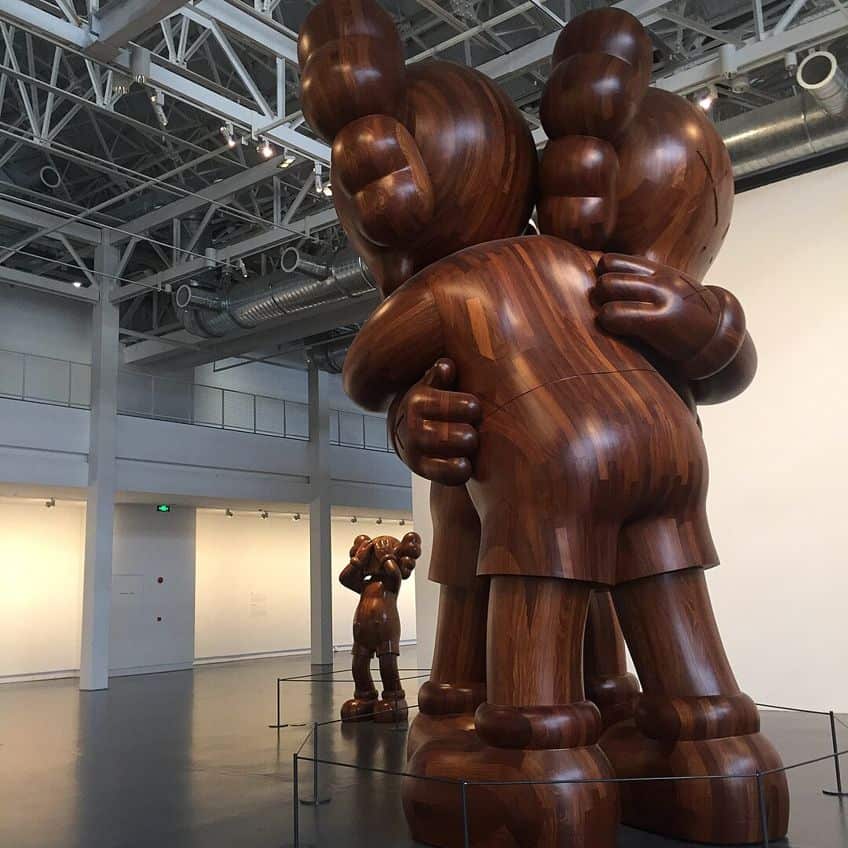
Unveiling a Unique Artistic Voice
Kaws’ debut exhibition showcased a collection of his iconic paintings, merging graffiti-inspired techniques with a contemporary art sensibility. The art world was captivated by his bold and vibrant compositions, featuring his signature characters with X-eyed skulls and an interplay of cartoon and pop culture references.
Critics and viewers were immediately drawn to the fusion of street art aesthetics with fine art, heralding Kaws as a pioneer of a new artistic movement.
A Breakthrough Moment
Kaws’ first major debut exhibition, titled OriginalFake, took place in 2001 at the iconic gallery in Tokyo, Japan, known as Parco Gallery. The reception of this first major exhibition was nothing short of groundbreaking. His artwork resonated with a wide range of audiences, from avid street art enthusiasts to established collectors and museum curators.
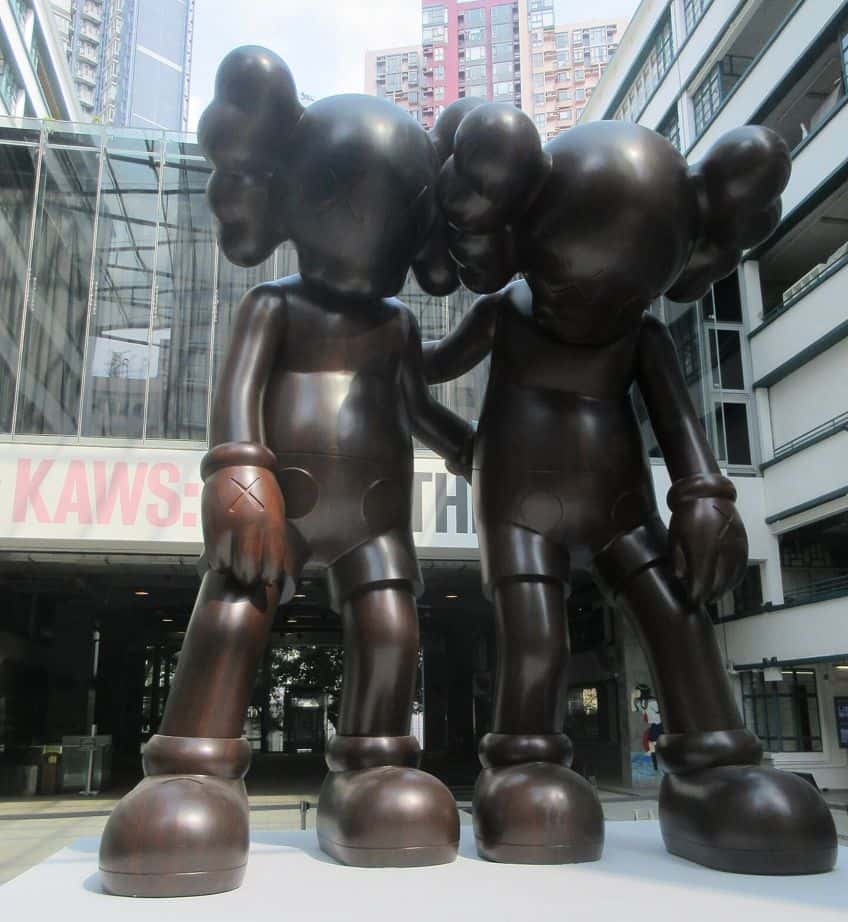
Critical Acclaim and Recognition
Art critics lauded Kaws’ debut exhibition for its boldness, technical prowess, and profound cultural commentary. His unique artistic voice, which deftly blended the accessible and the thought-provoking, garnered critical acclaim and attention from art institutions worldwide.
This recognition propelled Kaws into the spotlight, solidifying his position as a visionary artist and paving the way for his continued success.
Kaws Artworks: Sculptures
Kaws has extended his artistic expression to the realm of sculpture. His sculptures are not only visually striking but also possess a set of formal characteristics that contribute to their unique style and distinctive appeal. Let us delve into the technical choices that define Kaws’ sculptures, shedding light on the visual elements and artistic techniques that make them truly special.
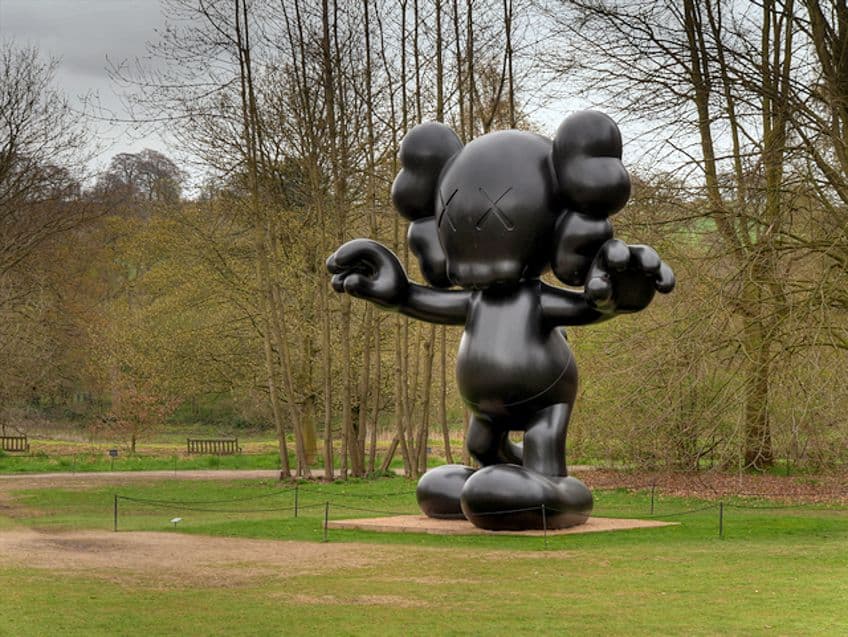
Bold Forms and Clean Lines
One of the defining features of Kaws’ sculptures is his use of bold forms and clean lines. His characters, often derived from popular culture, are transformed into three-dimensional sculptures that exude a sense of playfulness and immediacy. Kaws meticulously sculpts these forms, paying careful attention to their proportions and surface detailing.
The clean lines and precise execution enhance the visual impact, creating a seamless transition from his two-dimensional artworks to dynamic sculptures.
Captivating Textures and Surfaces
Kaws’ sculptures exhibit intricate textures and surfaces that contribute to their visual and tactile allure. He employs a range of techniques, such as meticulously carved details and hand-painted elements, to add depth and complexity. The juxtaposition of smooth and textured surfaces within a single sculpture creates visual interest and invites viewers to engage with the artwork from different angles. The use of various materials, including wood, bronze, and fiberglass, further enhances the sculptures’ tactile qualities.
Iconic Characters and Emotional Depth
Central to Kaws’ sculptural language are his iconic characters, such as the “Companion” figure. These characters, with their oversized heads and expressive features, convey a range of emotions and narratives. Kaws infuses his sculptures with a sense of depth and emotional resonance, provoking contemplation and introspection.
Through his technical mastery, he imbues the characters with a powerful presence, capturing the essence of vulnerability, isolation, and connection.
Playful Palette and Striking Contrasts
Kaws’ sculptures often feature a vibrant and playful color palette, evoking a sense of childlike wonder. The bold use of primary colors, combined with subtle shading and highlighting, brings the sculptures to life. Kaws’ deliberate choice of color creates dynamic contrasts and emphasizes key elements of the sculpture, drawing attention to their distinct features and enhancing their visual impact.
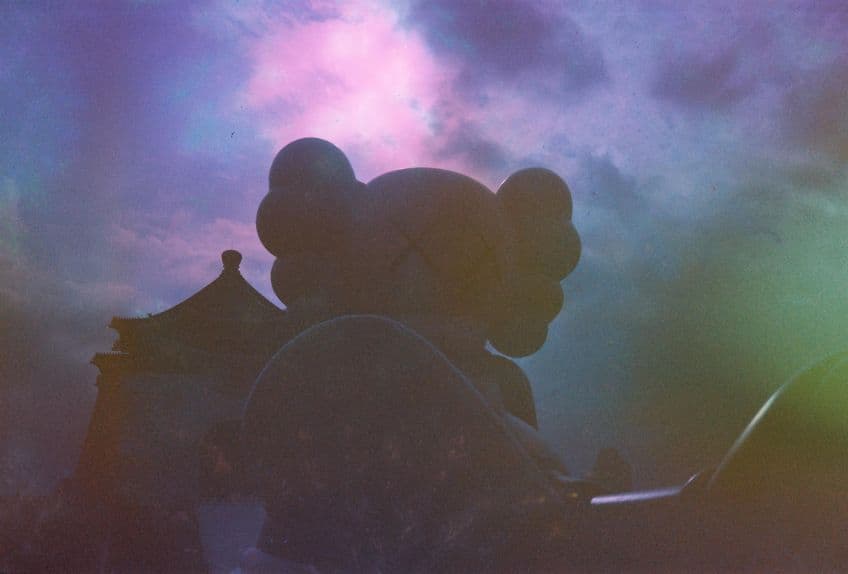
Interaction With Space and Audience
Kaws’ sculptures go beyond being static objects; they invite interaction and engagement with the surrounding space and audience. Whether it’s through their scale, composition, or subtle gestures, the sculptures foster a sense of connection and dialogue.
They establish a dynamic relationship with their environment, transforming the space they inhabit into a stage for storytelling and artistic expression.
Companion (Passing Through) (2012) by Kaws the Artist
| Title | Companion (Passing Through) |
| Date | 2012 |
| Medium | Fiberglass, metal structure, and paint |
| Dimensions (cm) | 529.6 × 429.9 × 469.9 |
| Location | Modern Art Museum of Fort Worth, Texas, United States |
Kaws’ Companion (Passing Through) (2012), showcased at the Modern Art Museum of Fort Worth, is a masterpiece that combines captivating visuals with profound conceptual depth. This short analysis delves into the visual elements and conceptual narratives present in this particular iteration of Kaws’ Companion, shedding light on its evocative nature and the thought-provoking themes it embodies.
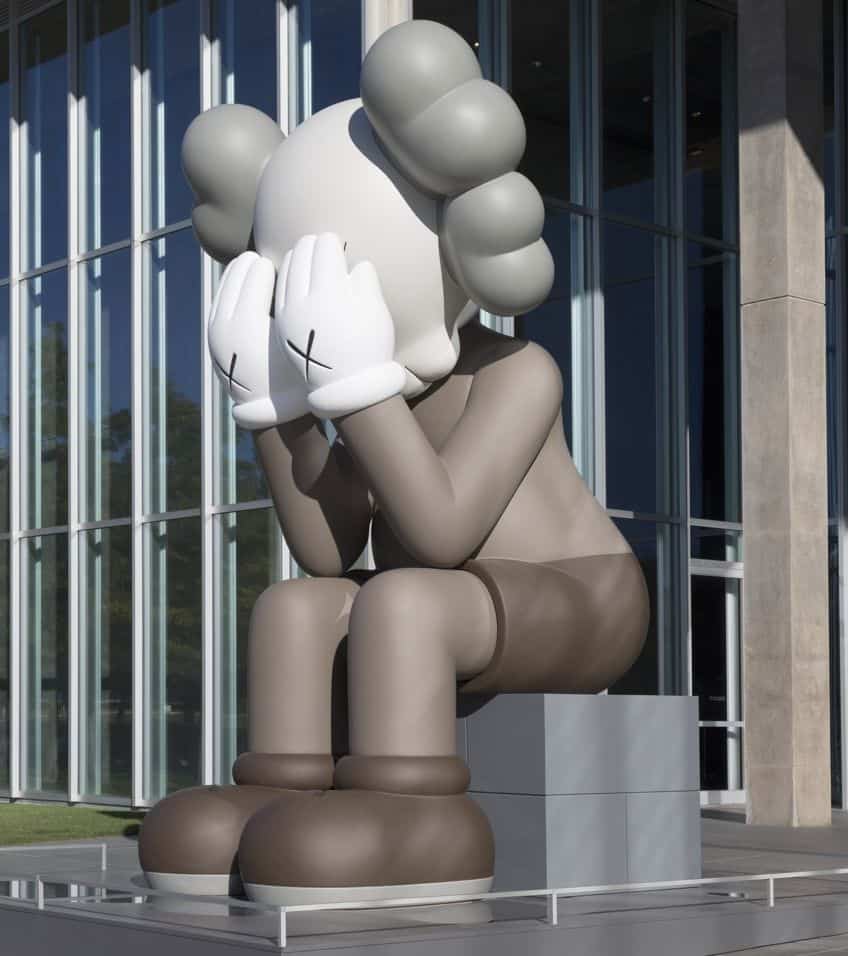
Visual Analysis
Companion (Passing Through) immediately captivates with its imposing presence and intricate details. The larger-than-life sculpture stands tall, exuding a sense of power and vulnerability simultaneously. Its distinctive features, such as the oversized head and gloved hands, command attention, inviting viewers to engage with its visual narrative.
The clean lines and smooth surfaces of the sculpture showcase Kaws’ exceptional craftsmanship.
The refined form of the character, meticulously sculpted and flawlessly executed, enhances the sculpture’s visual impact and demonstrates Kaws’ mastery of his craft. The use of subtle shading and highlighting adds depth and dimension, breathing life into the sculpture.
Conceptual Analysis
Companion (Passing Through) embodies profound conceptual narratives that resonate with viewers. The character’s melancholic expression and contemplative pose evoke emotions of longing and introspection. It stands as a symbol of the transient nature of existence, the passing of time, and the search for meaning in an ever-changing world.
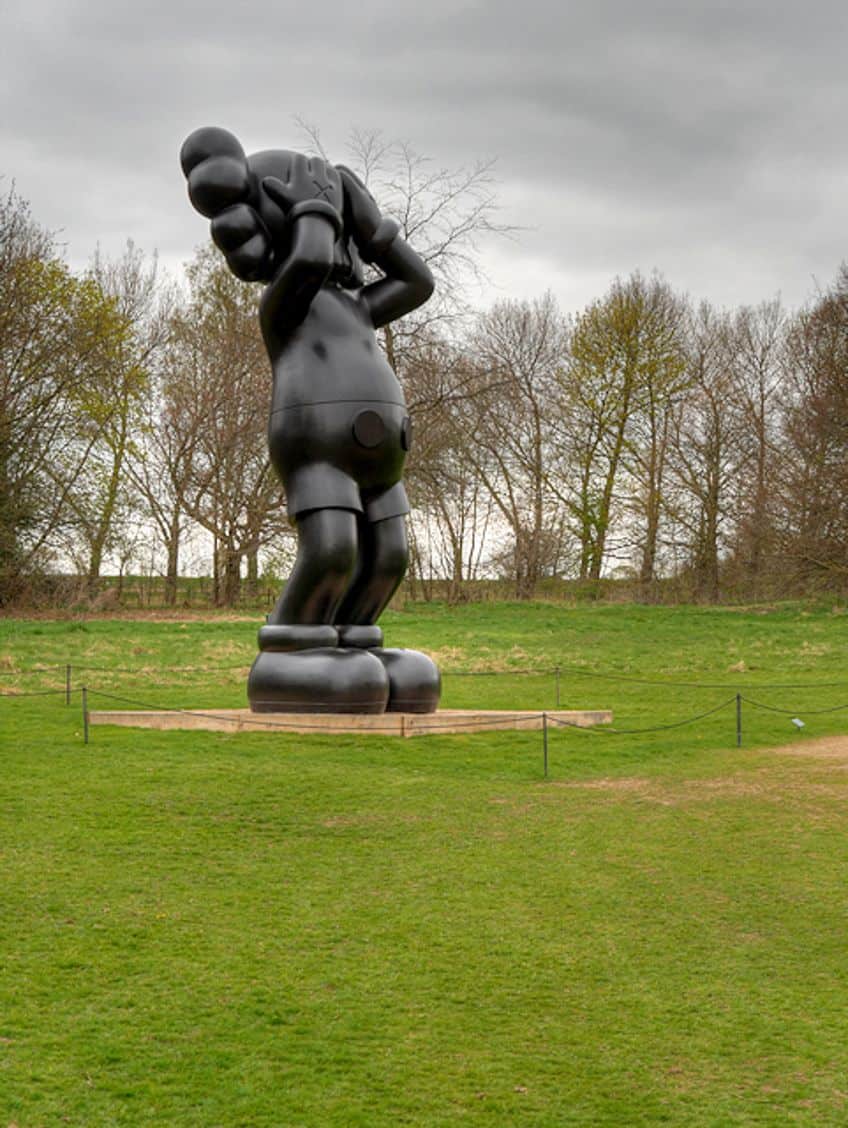
The character’s X-marked eyes, a recurring motif in Kaws’ work, invite interpretation and reflection. In this iteration of Companion, it is covering its eyes with its hands. However, the “x’s” are still visible on the tops of its gloved hands. They symbolize the individual’s struggles, inner conflicts, and the masks we wear to navigate the complexities of life. The tension between the character’s cartoon-like aesthetics and the emotional depth it exudes creates a thought-provoking contrast, prompting contemplation of the human condition and the fragility of our emotions.
Kaws, with his innovative and boundary-pushing artistic vision, has made an indelible mark on the art world. Through his unique blend of pop culture references, refined craftsmanship, and profound conceptual narratives, Kaws has captivated audiences worldwide. Kaws’ ability to bridge the gap between popular culture and fine art, coupled with his masterful technical choices, has firmly established him as a trailblazer in the contemporary art scene. As we continue to witness the evolution of his artistic practice, it is clear that Kaws’ impact on art history is profound and enduring, leaving an indestructible legacy for future generations of artists to admire and draw inspiration from.
Take a look at our Kaws’ artworks webstory here!
Frequently Asked Questions
What Technical Elements Characterize Kaws’ Paintings?
Kaws’ paintings are characterized by bold lines, vibrant colors, iconic characters, and a subversive approach to pop culture imagery. Through meticulous composition, skillful use of color, and deliberate technical choices, Kaws creates a unique and recognizable style that has garnered global acclaim. His artworks transcend traditional boundaries, inviting viewers into a world where imagination, subversion, and personal reflection intertwine. By mastering these formal characteristics, Kaws continues to leave an indelible mark on the contemporary art landscape.
Is Graffiti Real Art?
From its humble beginnings as a rebellious act of self-expression, graffiti art has evolved into a respected and influential movement. Motivated by a desire to reclaim public spaces and challenge societal norms, graffiti artists have left an indelible mark on the cultural landscape of the United States. Artists like Basquiat, Haring, and Kaws have played significant roles in shaping the evolution of graffiti art, pushing its boundaries and paving the way for future generations of artists to explore the expressive possibilities of the medium.
What Is Kaws’ Influence on Art History?
Kaws’ influence on art history extends beyond his individual artworks. By blending elements of street art, pop culture, and fine art, he has challenged the boundaries of what is considered “high” and “low” art. His ability to connect with both art world elites and street art enthusiasts has opened up new avenues for artists exploring the intersection of consumerism, mass media, and popular culture.
Nicolene Burger is a South African multi-media artist, working primarily in oil paint and performance art. She received her BA (Visual Arts) from Stellenbosch University in 2017. In 2018, Burger showed in Masan, South Korea as part of the Rhizome Artist Residency. She was selected to take part in the 2019 ICA Live Art Workshop, receiving training from art experts all around the world. In 2019 Burger opened her first solo exhibition of paintings titled, Painted Mantras, at GUS Gallery and facilitated a group collaboration project titled, Take Flight, selected to be part of Infecting the City Live Art Festival. At the moment, Nicolene is completing a practice-based master’s degree in Theatre and Performance at the University of Cape Town.
In 2020, Nicolene created a series of ZOOM performances with Lumkile Mzayiya called, Evoked?. These performances led her to create exclusive performances from her home in 2021 to accommodate the mid-pandemic audience. She also started focusing more on the sustainability of creative practices in the last 3 years and now offers creative coaching sessions to artists of all kinds. By sharing what she has learned from a 10-year practice, Burger hopes to relay more directly the sense of vulnerability with which she makes art and the core belief to her practice: Art is an immensely important and powerful bridge of communication that can offer understanding, healing and connection.
Nicolene writes our blog posts on art history with an emphasis on renowned artists and contemporary art. She also writes in the field of art industry. Her extensive artistic background and her studies in Fine and Studio Arts contribute to her expertise in the field.
Learn more about Nicolene Burger and the Art in Context Team.
Cite this Article
Nicolene, Burger, “Kaws – An In-Depth Look at His Famous Artworks.” Art in Context. July 31, 2023. URL: https://artincontext.org/kaws/
Burger, N. (2023, 31 July). Kaws – An In-Depth Look at His Famous Artworks. Art in Context. https://artincontext.org/kaws/
Burger, Nicolene. “Kaws – An In-Depth Look at His Famous Artworks.” Art in Context, July 31, 2023. https://artincontext.org/kaws/.





